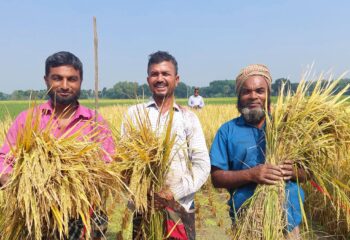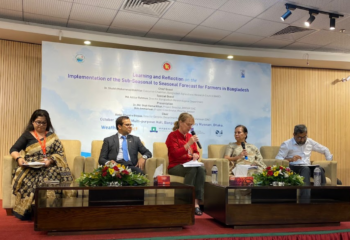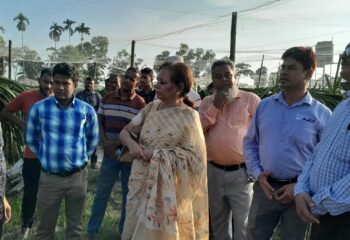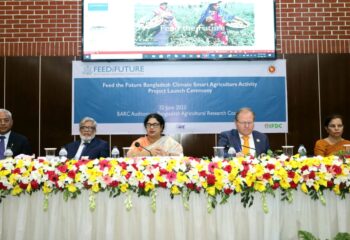
The Feed the Future Bangladesh Climate Smart Agriculture Project* (2023-2028), funded by the United States Agency for International Development (USAID) and led by IFDC, aims to facilitate farmers, firms, and public sector actors to increase the sustainable productivity and crop diversity of smallholder farmers through a more resilient and inclusive food and agriculture production system in Bangladesh.
The project’s primary goal is to sustainably improve the food and nutritional security of the rural population, decrease the incidences and severity of poverty among the rural poor, and better adapt agricultural systems to meet the threats and challenges linked to climate shift-related events, thus improving the efficiency of farming systems through climate-smart agriculture (CSA).
With a special focus on social inclusion, the project will work to support inclusive development by mainstreaming women’s participation in Bangladesh’s agriculture sector. The meaningful participation of women is crucial to the project’s purpose and goals.
The Feed the Future Banglash Climate Smart Agriculture Project seeks to improve food and nutritional security, decrease poverty rates, and better adapt agricultural systems to address climate-related challenges and shocks.
The Feed the Future Bangladesh Climate Smart Agriculture initiative will implement its activities in close coordination with the local Ministry of Agriculture, including its research institutes and extension departments. In addition, the organization Action for Enterprise (AFE) will work alongside IFDC to implement the activities related to pulses and oilseeds.
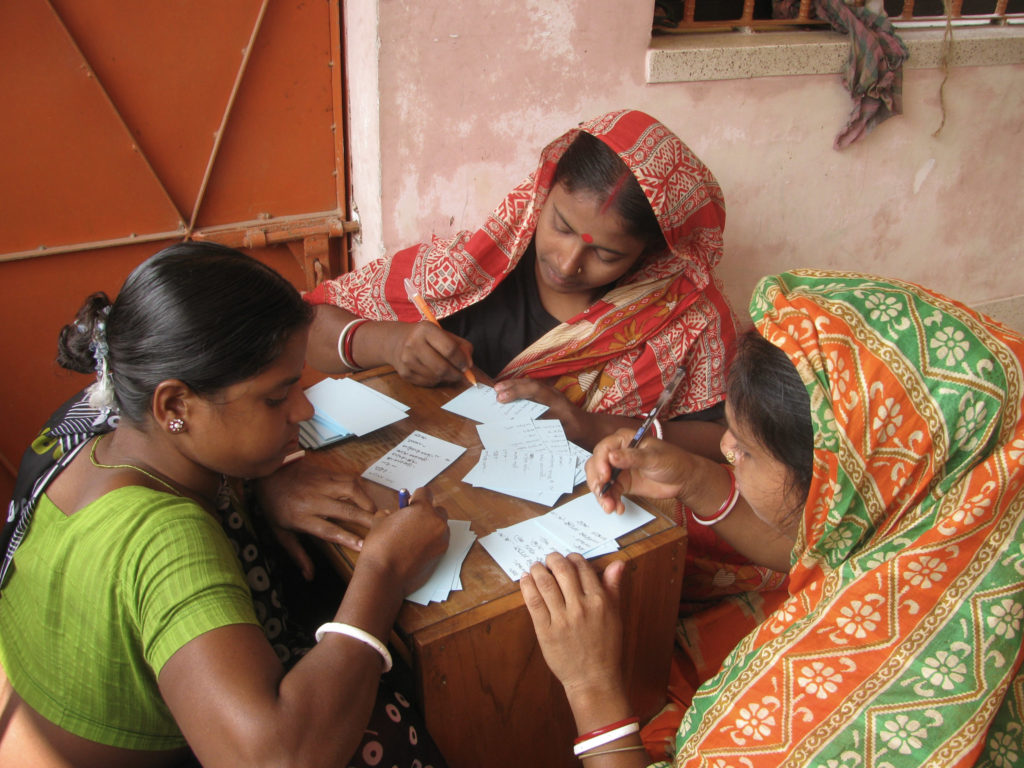
Objectives and Intermediate Results
In order to accomplish the program objectives, the Feed the Future Bangladesh Climate Smart Agriculture project seeks to achieve three Intermediate Results (IRs).
Intermediate Result 1
Increase the availability of climate-resilient varieties of target crops (rice, pulses, oilseeds, and vegetable crops) through seed system strengthening.
- Sub- IR 1.1: Strengthened the capacity of public and private sector actors to develop, multiply, and disseminate high-quality climate-resilient seed.
- Sub-IR 1.2: Enhance relationships between seed sector actors, the public and the private sectors, as well as smallholder farmers.
- Sub-IR 1.3: Enhance private sector engagement and partnering with national/international public organizations in the development and multiplication of high-quality climate-adapted seed.
- Sub-IR 1.4: Strengthen the seed certification system to ensure more certified high-quality seed varieties.
Intermediate Result 2
Enhance market delivery of climate-adapted innovations of agro-inputs, including seeds, practices, and climate information services.
- Sub-IR 2.1: Improve the private sector capacity to adapt, efficiently distribute, and deliver quality agricultural inputs and services at scale and at a profit.
- Sub-IR 2.2: Improve the private sector capacity to link smallholders with output markets, reduce post-harvest loss, and add value.
- Sub-IR 2.3: Improve access to climate/weather information systems and digital tools.
Intermediate Result 3
Increase smallholder farmer application of climate-smart agriculture technologies and practices.
- Sub-IR 3.1: Increase producer access to information and training on climate-resilient practices and climate information.
- Sub-IR 3.2: Enhance use of evidence on producer knowledge, uptake, and return on investment.
- Sub-IR 3.3: Increase reach and quality of public and private agricultural extension and advisory services.
*The Feed the Future Bangladesh Climate Smart Agriculture project is the subject of a termination notice issued by the U.S. Department of State/USAID on February 26, 2025.
Expected Results
Outcomes
- Agri-policies are conducive to expansion of private sector.
- Market restrictions are reduced to achieve food security.
- CSA input prices are rationalized.
- Investment regulations for private sectors are lessened.
- Anti-competitive collusive behavior is regulated.
- The quality of CSA technologies and inputs in the market improved and farmers are using quality CSA technologies.
- CSA inputs and selected crops output market transparency are improved to support decision making.
- Knowledge transfer systems by both DAE and private sector that allow farmers to safe use and handling of CSA technologies strengthened.
- Information on CSA input market prices, technology, financing, policies, and risk-reducing actions to climate are readily available to farmers and entrepreneurs from public and private sources.
- Access to institutional finance by SMEs and farmers made easy.
- Entrepreneurs are free to enter and exit the CSA technology business.
- CSA technologies are available even in remote areas.
Results
- 1,335 private sector enterprises with improved participation in the local economy.
- 5 private sector enterprises engaged with USG to support U.S. Foreign Assistance objectives.
- Value of new private sector investment leveraged of $2 million by the USG to support food security and nutrition.
- Value of annual sales of private sector firms increased by $4.4 million.
- An area of about 680,000 ha of rice, 100,000 ha of pulses, 50,000 ha of oilseeds, 20,000 ha of vegetables and other crops under CSA technologies and practices.
- 900,000 farmers using CSA technologies and practices in the Feed the Future districts.
- Yield of rice increased by 5%, pulses by 5%, oilseeds by 5%, and vegetable and other crops by 10% annually from the baseline.
- Value of annual sales of rice, pulses, oilseeds, vegetables, and another crop produces increased by $6 million from baseline.
- An additional $500,000 in the form of credit is disbursed from banks to SMEs and farmers annually.
- 230,000 people using climate information or implementing risk-reducing actions to improve resilience to climate change.
- 2,485 individuals participating in the Feed the Future Bangladesh Climate-Smart Agriculture Project
- Fertilizer use efficiency saved 454,000 mt of fertilizer.
- GOB subsidy burden reduced by $424 million.
- Rice production increased by 8.3 million mt, pulses by 0.34 million mt, oilseeds by 0.19 million mt, and vegetables by 0.70 million mt.
- Value of crop production increased by $2.8 billion.
- 20% female participation in USG-assisted programs designed to increase access to productive economic resources.
Project Results
2023
- Conducted a market assessment survey and private sector engagement workshops, and 38 firms showed interest in contributing to the project’s activities.
- Organized two regional workshops to engage small and medium enterprises (SMEs) in agricultural inputs and service delivery.
- Established demo plots in 200 model villages, where 212 training sessions took place.
- Conducted six demonstrations on the location-specific advantages of climate-smart agriculture specifically for pulses and oilseeds, covering a total of 30 acres.
- Selected 370 briquetting machine owners to receive SME grants to alleviate challenges with access.
- Conducted 13 field demonstrations on rice and eight on vegetables, and held 11 field days in the Aman season.
- Conducted 151 demonstrations of climate-smart rice, vegetables, pulses, and oilseeds in the Boro season.
Contact Project Leader


